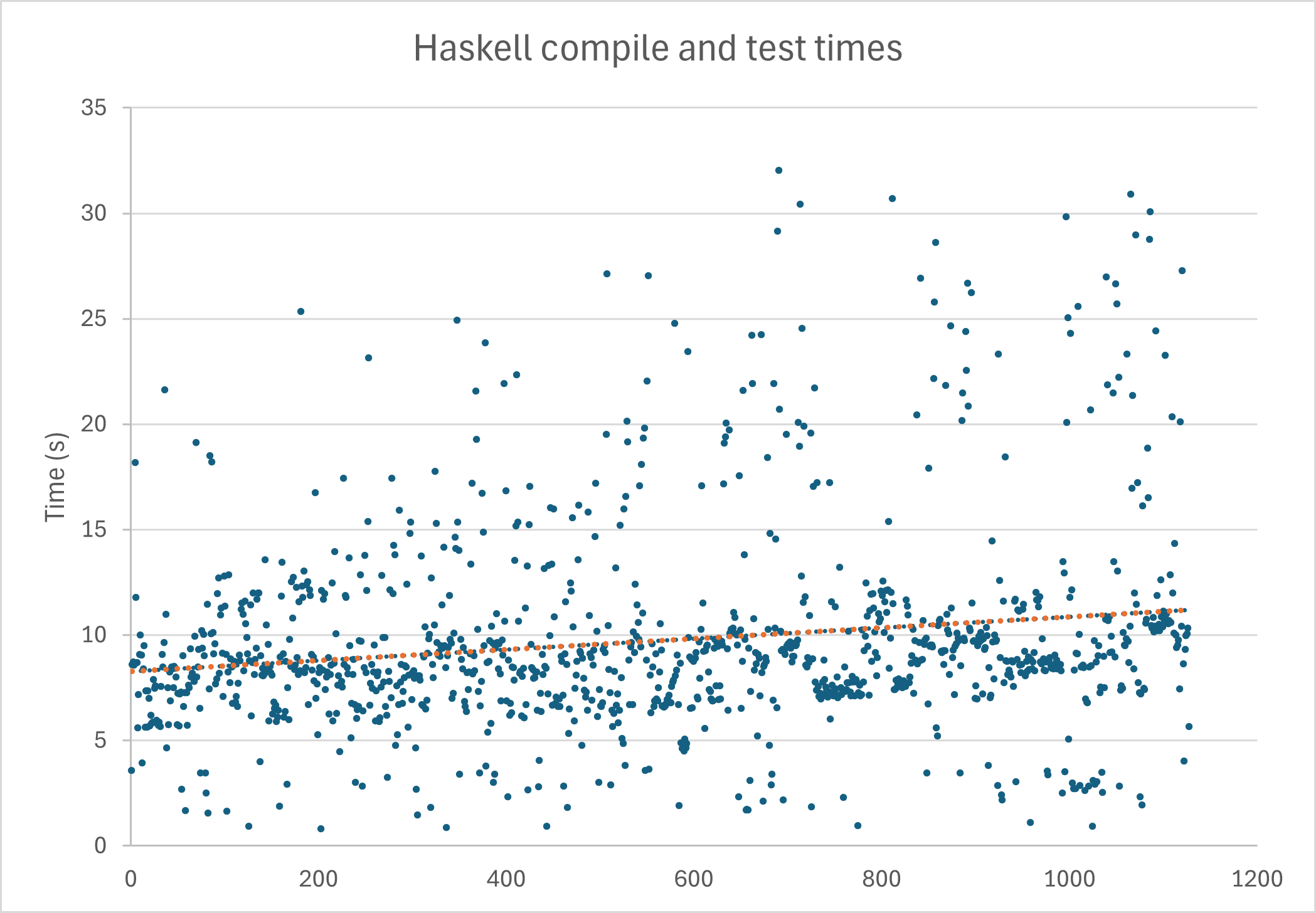This New JavaScript Operator is an Absolute Game Changer
JavaScript has evolved significantly over the years, introducing new features and syntax that make the language more powerful and expressive. One of the most exciting additions to the language is the nullish coalescing operator (??). This operator is an absolute game-changer, providing a concise and intuitive way to handle null and undefined values. In this article, we'll explore the nullish coalescing operator, its benefits, and how to use it effectively in TypeScript. Introduction to the Nullish Coalescing Operator The nullish coalescing operator (??) is a logical operator that returns the right-hand side operand when the left-hand side operand is null or undefined. This is particularly useful for providing default values and avoiding common pitfalls associated with the logical OR (||) operator. The Problem with Logical OR (||) Before the introduction of the nullish coalescing operator, developers often used the logical OR (||) operator to provide default values. However, this approach has a significant drawback: it treats falsy values (such as 0, '', and false) as equivalent to null or undefined. let value = 0; let defaultValue = value || 10; console.log(defaultValue); // Output: 10 In the example above, value is 0, which is a falsy value. As a result, defaultValue is assigned 10, even though 0 is a valid number. This behavior can lead to unexpected results and bugs in your code. The Nullish Coalescing Operator (??) to the Rescue The nullish coalescing operator (??) solves this problem by only returning the right-hand side operand when the left-hand side operand is null or undefined. This makes it a more reliable choice for providing default values. let value: number | null | undefined = 0; let defaultValue = value ?? 10; console.log(defaultValue); // Output: 0 In this example, value is 0, which is not nullish. As a result, defaultValue is assigned 0, preserving the intended value. Benefits of the Nullish Coalescing Operator Clarity and Intent: The nullish coalescing operator clearly communicates the intent to provide a default value only when the original value is null or undefined. Avoiding Bugs: By distinguishing between falsy values and nullish values, the nullish coalescing operator helps avoid common bugs and unexpected behavior. Conciseness: The nullish coalescing operator provides a concise and readable way to handle default values, reducing the need for verbose conditional statements. Using the Nullish Coalescing Operator in TypeScript TypeScript fully supports the nullish coalescing operator, making it easy to integrate into your TypeScript projects. Let's explore some examples to see how it can be used effectively. Example: Providing Default Values One of the most common use cases for the nullish coalescing operator is providing default values for function parameters. function greet(name: string | null | undefined, greeting: string = 'Hello'): string { const defaultName = name ?? 'Guest'; return `${greeting}, ${defaultName}!`; } console.log(greet(null)); // Output: Hello, Guest! console.log(greet(undefined)); // Output: Hello, Guest! console.log(greet('Alice')); // Output: Hello, Alice! In this example, the greet function uses the nullish coalescing operator to provide a default name of 'Guest' when the name parameter is null or undefined. Example: Handling Optional Properties The nullish coalescing operator is also useful for handling optional properties in objects. interface User { id: number; name?: string; email?: string; } const user: User = { id: 1, name: null, }; const displayName = user.name ?? 'Anonymous'; const displayEmail = user.email ?? 'No email provided'; console.log(`User ID: ${user.id}`); console.log(`Display Name: ${displayName}`); console.log(`Display Email: ${displayEmail}`); In this example, the User interface has optional name and email properties. The nullish coalescing operator is used to provide default values for these properties when they are null or undefined. Example: Working with Arrays The nullish coalescing operator can also be used to handle nullish values in arrays. const values: (number | null | undefined)[] = [1, null, 3, undefined, 5]; const defaultValues = values.map(value => value ?? 0); console.log(defaultValues); // Output: [1, 0, 3, 0, 5] In this example, the values array contains numbers, null, and undefined. The nullish coalescing operator is used to replace nullish values with 0. Advanced Use Cases The nullish coalescing operator is not just for simple default values. It can also be used in more advanced scenarios, such as chaining multiple fallbacks and combining with other operators. Example: Chaining Multiple Fallbacks You can chain multiple nullish coalescing operators to provide multiple fallback values. let value: number | null | undefined = null; let fal

JavaScript has evolved significantly over the years, introducing new features and syntax that make the language more powerful and expressive. One of the most exciting additions to the language is the nullish coalescing operator (??). This operator is an absolute game-changer, providing a concise and intuitive way to handle null and undefined values. In this article, we'll explore the nullish coalescing operator, its benefits, and how to use it effectively in TypeScript.
Introduction to the Nullish Coalescing Operator
The nullish coalescing operator (??) is a logical operator that returns the right-hand side operand when the left-hand side operand is null or undefined. This is particularly useful for providing default values and avoiding common pitfalls associated with the logical OR (||) operator.
The Problem with Logical OR (||)
Before the introduction of the nullish coalescing operator, developers often used the logical OR (||) operator to provide default values. However, this approach has a significant drawback: it treats falsy values (such as 0, '', and false) as equivalent to null or undefined.
let value = 0;
let defaultValue = value || 10;
console.log(defaultValue); // Output: 10
In the example above, value is 0, which is a falsy value. As a result, defaultValue is assigned 10, even though 0 is a valid number. This behavior can lead to unexpected results and bugs in your code.
The Nullish Coalescing Operator (??) to the Rescue
The nullish coalescing operator (??) solves this problem by only returning the right-hand side operand when the left-hand side operand is null or undefined. This makes it a more reliable choice for providing default values.
let value: number | null | undefined = 0;
let defaultValue = value ?? 10;
console.log(defaultValue); // Output: 0
In this example, value is 0, which is not nullish. As a result, defaultValue is assigned 0, preserving the intended value.
Benefits of the Nullish Coalescing Operator
-
Clarity and Intent: The nullish coalescing operator clearly communicates the intent to provide a default value only when the original value is
nullorundefined. - Avoiding Bugs: By distinguishing between falsy values and nullish values, the nullish coalescing operator helps avoid common bugs and unexpected behavior.
- Conciseness: The nullish coalescing operator provides a concise and readable way to handle default values, reducing the need for verbose conditional statements.
Using the Nullish Coalescing Operator in TypeScript
TypeScript fully supports the nullish coalescing operator, making it easy to integrate into your TypeScript projects. Let's explore some examples to see how it can be used effectively.
Example: Providing Default Values
One of the most common use cases for the nullish coalescing operator is providing default values for function parameters.
function greet(name: string | null | undefined, greeting: string = 'Hello'): string {
const defaultName = name ?? 'Guest';
return `${greeting}, ${defaultName}!`;
}
console.log(greet(null)); // Output: Hello, Guest!
console.log(greet(undefined)); // Output: Hello, Guest!
console.log(greet('Alice')); // Output: Hello, Alice!
In this example, the greet function uses the nullish coalescing operator to provide a default name of 'Guest' when the name parameter is null or undefined.
Example: Handling Optional Properties
The nullish coalescing operator is also useful for handling optional properties in objects.
interface User {
id: number;
name?: string;
email?: string;
}
const user: User = {
id: 1,
name: null,
};
const displayName = user.name ?? 'Anonymous';
const displayEmail = user.email ?? 'No email provided';
console.log(`User ID: ${user.id}`);
console.log(`Display Name: ${displayName}`);
console.log(`Display Email: ${displayEmail}`);
In this example, the User interface has optional name and email properties. The nullish coalescing operator is used to provide default values for these properties when they are null or undefined.
Example: Working with Arrays
The nullish coalescing operator can also be used to handle nullish values in arrays.
const values: (number | null | undefined)[] = [1, null, 3, undefined, 5];
const defaultValues = values.map(value => value ?? 0);
console.log(defaultValues); // Output: [1, 0, 3, 0, 5]
In this example, the values array contains numbers, null, and undefined. The nullish coalescing operator is used to replace nullish values with 0.
Advanced Use Cases
The nullish coalescing operator is not just for simple default values. It can also be used in more advanced scenarios, such as chaining multiple fallbacks and combining with other operators.
Example: Chaining Multiple Fallbacks
You can chain multiple nullish coalescing operators to provide multiple fallback values.
let value: number | null | undefined = null;
let fallback1: number | null | undefined = undefined;
let fallback2: number | null | undefined = 42;
let result = value ?? fallback1 ?? fallback2 ?? 0;
console.log(result); // Output: 42
In this example, value and fallback1 are nullish, so the nullish coalescing operator falls back to fallback2, which is 42.
Example: Combining with Other Operators
The nullish coalescing operator can be combined with other operators, such as the ternary operator, to create more complex conditional expressions.
let value: number | null | undefined = 0;
let result = value !== null ? value ?? 10 : 20;
console.log(result); // Output: 0
In this example, the ternary operator is used to check if value is not null. If it is not null, the nullish coalescing operator is used to provide a default value of 10. If value is null, the result is 20.
Best Practices
When using the nullish coalescing operator, it's important to follow best practices to ensure your code is clear, maintainable, and bug-free.
- Use It Sparingly: While the nullish coalescing operator is powerful, it should be used sparingly. Overusing it can make your code harder to read and understand.
- Document Your Intent: When using the nullish coalescing operator, consider adding comments to document your intent, especially in complex expressions.
- Avoid Mixing with Logical OR: Mixing the nullish coalescing operator with the logical OR operator can lead to confusion and bugs. Stick to one operator for providing default values.
- Test Thoroughly: Always test your code thoroughly to ensure that the nullish coalescing operator is behaving as expected, especially in edge cases.
Conclusion
The nullish coalescing operator (??) is a game-changer for JavaScript and TypeScript developers. It provides a concise and intuitive way to handle null and undefined values, avoiding common pitfalls associated with the logical OR operator. By using the nullish coalescing operator, you can write clearer, more maintainable code that is less prone to bugs.
Whether you're providing default values, handling optional properties, or working with arrays, the nullish coalescing operator has you covered. Integrate it into your TypeScript projects today and experience the benefits for yourself.
Happy coding!
What's Your Reaction?


























